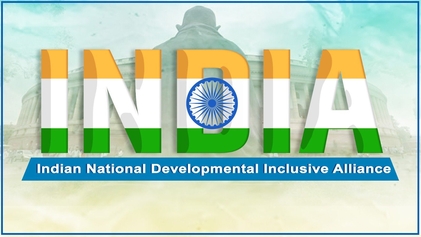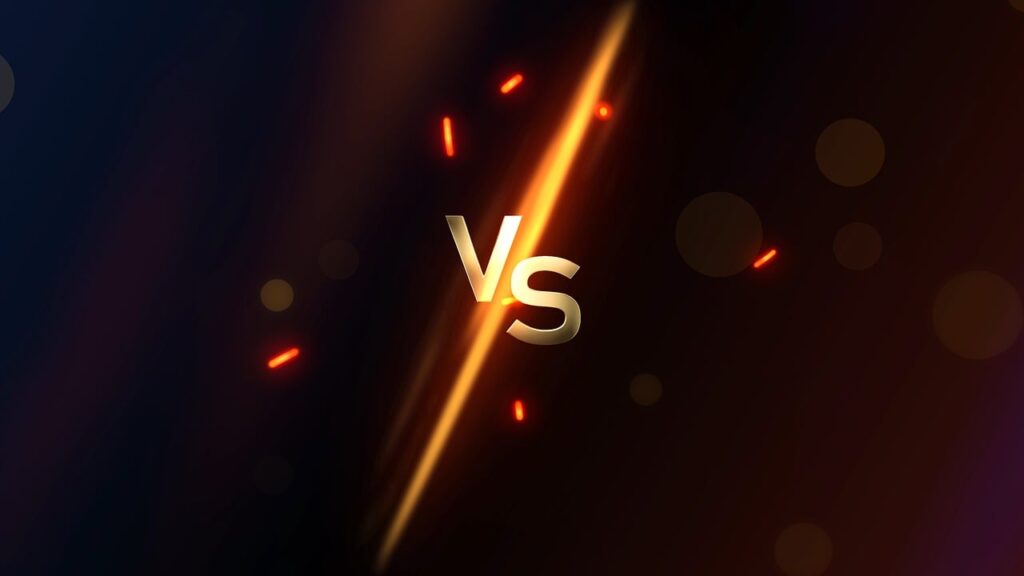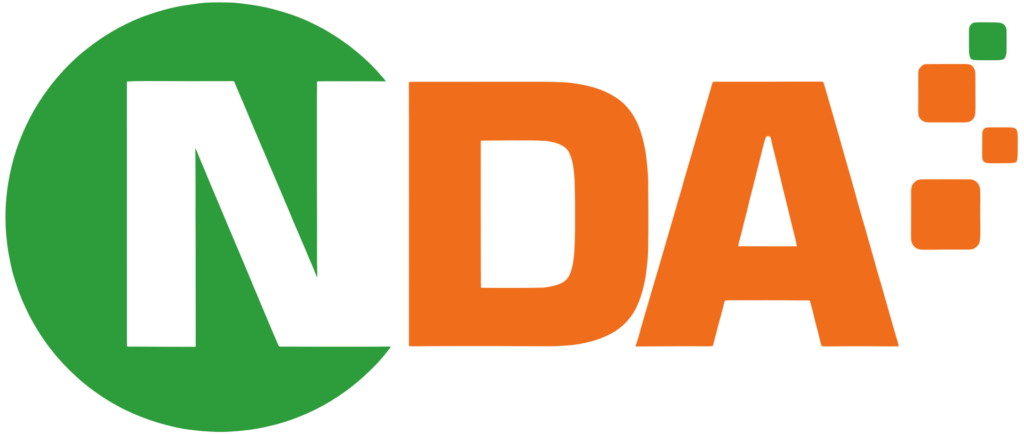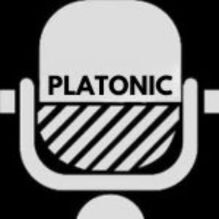


As the 2024 Lok Sabha elections draw near, battle for 2024 started and political alliances in India are taking shape, with key players forming alliances to secure a majority in the lower house of Parliament. Among these alliances, two stand out prominently: the National Democratic Alliance (NDA) and the I.N.D.I.A alliance. These alliances bring together a diverse range of regional and national parties, each with its own strengths and weaknesses. In this article, we will delve deeper into these alliances, examining their positive and negative aspects, and raising the question of which one will emerge victorious in 2024.
The I.N.D.I.A Alliance
The I.N.D.I.A alliance is a allies of 27 parties presents itself as a united front against the ruling Bharatiya Janata Party (BJP) and its allies (N.D.A).
The I.N.D.I.A alliance, led by the Indian National Congress (NC), is a diverse coalition of parties with varying ideologies. It has strong regional representation, with key players like the DMK in Tamil Nadu, the AITC in West Bengal, and the JMM in Jharkhand. These regional parties have historically performed well in their respective states and can help the alliance secure seats in their regions.
One of the alliance’s major strengths is its leadership. Leaders like Mallikarjun Kharge, Mamata Banerjee, and Akhilesh Yadav are experienced politicians with a strong grassroots presence. They have the ability to connect with voters and mobilize support.
Additionally, the I.N.D.I.A alliance’s wide geographic coverage, with a presence in multiple states, gives it the potential to win seats across the country.
However, the alliance also faces challenges. The most significant of these is managing ideological differences among its member parties. From the center-left to far-left, the alliance encompasses a wide range of political ideologies. Presenting a coherent vision and agenda to the electorate may prove to be challenging, and disagreements on policy matters could surface.
Furthermore, internal power struggles within the alliance, as leaders vie for prominence, could undermine its unity. Additionally, some parties in the alliance have faced anti-incumbency sentiments in their respective states, which could affect their performance at the national level.
List of parties in I.N.D.I.A
- Indian National Congress (NC): 50 seats
- Dravida Munnetra Kazhagam (DMK): 24 seats
- All India Trinamool Congress (AITC): 23 seats
- Janata Dal (United) (JD(U)): 16 seats
- Shiv Sena (Uddhav Balasaheb Thackeray) (SS(UBT)): 6 seats
- Nationalist Congress Party (NCP): 4 seats
- Communist Party of India (Marxist) (CPI(M)): 3 seats
- Samajwadi Party (SP): 3 seats
- Indian Union Muslim League (IUML): 3 seats
- Jammu and Kashmir National Conference (JKNC): 3 seats
- Communist Party of India (CPI): 2 seats
- Aam Aadmi Party (AAP): 1 seat
- Jharkhand Mukti Morcha (JMM): 1 seat
- Kerala Congress (M) (KC(M)): 1 seat
- Viduthalai Chiruthaigal Katchi (VCK): 1 seat
- Revolutionary Socialist Party (RSP): 1 seat
- Rashtriya Janata Dal (RJD): 6 seats
- Rashtriya Lok Dal (RLD): 1 seat
- Marumalarchi Dravida Munnetra Kazhagam (MDMK): 1 seat
- Communist Party of India (Marxist–Leninist) Liberation (CPI(ML)L): 1 seat
- Kerala Congress (KC): 1 seat
- Apna Dal (Kamerawadi) (AD(K)): 1 seat
- All India Forward Bloc (AIFB): 1 seat
- Jammu and Kashmir Peoples Democratic Party (PDP): 0 seats
- Manithaneya Makkal Katchi (MMK): 0 seats
- Kongunadu Makkal Desia Katchi (KMDK): 0 seats
- Peasants and Workers Party of India (PWPI): 0 seats
Positive Aspects:
- Diverse Regional Representation: The I.N.D.I.A alliance includes a broad spectrum of regional parties, ensuring that regional interests are well-represented. Parties like the DMK, AITC, and JMM have strongholds in their respective states and can consolidate the regional vote.
- Experience and Leadership: With leaders like Mallikarjun Kharge, Mamata Banerjee, and Akhilesh Yadav, the alliance boasts experienced and dynamic leadership. Their ability to connect with voters and mobilize support is a significant asset.
- Wide Geographic Coverage: The I.N.D.I.A alliance has a presence in multiple states, including West Bengal, Tamil Nadu, Bihar, and Uttar Pradesh. This wide geographic coverage can translate into a significant number of seats.
Negative Aspects:
- Ideological Differences: The alliance includes parties with varying ideologies, from the center-left to far-left. Managing ideological differences and presenting a coherent vision to the electorate could be challenging.
- Leadership Tussles: While the alliance has strong leaders, it also faces the risk of internal power struggles. Balancing the ambitions of various leaders may prove to be a delicate task.
- Anti-Incumbency Challenges: Some of the parties in the I.N.D.I.A alliance have faced anti-incumbency in their respective states. Convincing voters to support them at the national level might be a hurdle.
The NDA Alliance
The ruling NDA alliance, led by the Bharatiya Janata Party (BJP), has been in power since 2014 , and currently claiming to have support of 38 allies and 3 independent candidates .
It is the incumbent ruling coalition. It benefits from the advantage of having governed India for the past two terms. The alliance can showcase its track record, highlighting its development initiatives and achievements during its time in power.
Ideological cohesion is another major strength of the NDA. Unlike the I.N.D.I.A alliance, the NDA comprises parties with similar ideologies, particularly center-right to right-wing. This ideological alignment can lead to a more unified and coherent campaign.
Narendra Modi’s leadership remains a significant asset for the NDA. His charismatic appeal and popularity among voters have been instrumental in the alliance’s previous electoral victories.
However, the NDA also faces challenges. It has relatively fewer regional partners compared to the I.N.D.I.A alliance. In states where regional parties hold significant sway, the NDA may need to rely on its national presence and alliances with regional partners.
There are concerns about the erosion of the NDA alliance due to signs of discontent among some regional allies. Maintaining the unity of the alliance and addressing the grievances of regional partners will be crucial to its success.
Moreover, after nearly a decade in power, anti-incumbency sentiments may start to affect the NDA. Voters may seek change and fresh faces, posing a challenge for the alliance.
List of parties in N.D.A
- Bharatiya Janata Party (BJP): 301 seats
- National People’s Party (NPP): 1 seat
- AJSU Party (AJSUP): 1 seat
- All India Anna Dravida Munnetra Kazhagam (AIADMK): 0 seats
- All India N.R. Congress (AINRC): 0 seats
- Apna Dal (Soneylal) (AD(S)): 2 seats
- Asom Gana Parishad (AGP): 0 seats
- Hill State People’s Democratic Party (HSPDP): 0 seats
- Hindustani Awam Morcha (HAM): 0 seats
- Indigenous People’s Front of Tripura (IPFT): 0 seats
- Jannayak Janta Party (JJP): 0 seats
- Janata Dal (Secular) (JD(S)): 0 seats
- Lok Janshakti Party (Ram Vilas) (LJP(RV)): 1 seat
- Maharashtrawadi Gomantak Party (MGP): 0 seats
- Naga People’s Front (NPF): 1 seat
- Nationalist Congress Party (Ajit Pawar) (NCP(AP)): 1 seat
- Nationalist Democratic Progressive Party (NDPP): 1 seat
- Shiv Sena (SS): 13 seats
- Sikkim Krantikari Morcha (SKM): 1 seat
- United Democratic Party (UDP): 0 seats
- United People’s Party Liberal (UPPL): 1 seat
- Bharath Dharma Jana Sena (BDJS): 0 seats
- Gorkha National Liberation Front (GNLF): 0 seats
- Haryana Lokhit Party (HLP): 0 seats
- Indhiya Jananayaga Katchi (IJK): 0 seats
- Jan Surajya Shakti (JSS): 0 seats
- Jana Sena Party (JSP): 0 seats
- Kerala Kamaraj Congress (KKC): 0 seats
- NISHAD Party (NP): 0 seats
- Prahar Janshakti Party (PJP): 0 seats
- Puthiya Tamilagam (PT): 0 seats
- Rashtriya Lok Janshakti Party (RLJP): 5 seats
- Rashtriya Samaj Paksha (RSP): 0 seats
- Republican Party of India (Athawale) (RPI(A)): 0 seats
- Shiromani Akali Dal (Sanyukt) (SAD(S)): 0 seats
- Suheldev Bharatiya Samaj Party (SBSP): 0 seats
- Tamil Maanila Congress (Moopanar) (TMC(M)): 1 seat
- Tamizhaga Makkal Munnetra Kazhagam (TMMK): 0 seats
- Independent (IND): 3 seats
Positive Aspects:
- Strong Incumbency Advantage: The NDA alliance benefits from the incumbency advantage, having governed India for the past two terms. It can showcase its track record and development initiatives.
- Ideological Cohesion: Unlike the I.N.D.I.A alliance, the NDA comprises parties with similar ideologies, particularly center-right to right-wing. This ideological coherence can lead to a more unified campaign.
- Leadership Stability: With Narendra Modi at the helm, the NDA has a charismatic leader who enjoys immense popularity. His leadership has been a key factor in the alliance’s previous victories.
Negative Aspects:
- Limited Regional Partners: While the NDA has strong national partners like the BJP and Shiv Sena, it has relatively fewer regional partners. This could be a disadvantage in states where regional parties hold sway.
- Alliance Erosion: Some regional allies of the NDA have shown signs of discontent, leading to concerns about the cohesion of the alliance. Managing these internal rifts will be crucial.
- Anti-Incumbency Pressure: After nearly a decade in power, anti-incumbency sentiments may start to affect the NDA. Voters may seek change and fresh faces.
Both the NDA and I.N.D.I.A alliances bring unique strengths and weaknesses to the table. The I.N.D.I.A alliance offers diversity and regional representation, while the NDA touts its incumbency advantage and ideological cohesion. The 2024 Lok Sabha elections will undoubtedly be a closely contested battle, and the outcome remains uncertain.
As we analyze these alliances, one question looms large: Who will emerge victorious in the 2024 elections? The answer lies in the hands of the Indian electorate, and only time will reveal the verdict of the world’s largest democracy. The battle for India’s future is set, and it promises to be a riveting political spectacle.
Facebook
Twitter
LinkedIn
Click here to read our other articles



[…] the boycott enacted by the INDIA Alliance sends a resounding message against perceived media bias, it simultaneously initiates a broader and […]